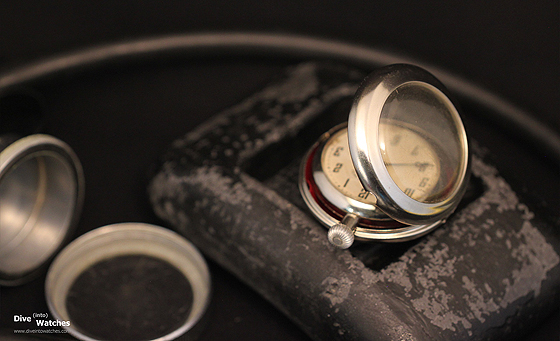When Rolex and Blancpainlaunched their first tag heuer replica watches sale wristwatches for divers in the early 1950s they did, in fact, create the archetype of the modern dive watch, thanks to the development of the quintessential rotating bezel. However, they did not invent the first watch used by divers.
If we travel back in time, we find that World War II (and, especially, the frogmen of the Italian Navy) demonstrated the potential of underwater warfare and thus the need for salvage. This, in turn, further increased the need for water-resistant watches in order to better conduct underwater missions involving timing and navigation. The 1940s marked the introduction of various water-resistant watches and, of course, the canteen-style watches that were equipped with little more than an additional crown cap for increased water resistance. Earlier, in the 1930s, there was Panerai supplying the Italian naval divers with various instruments as well as (in cooperation with Rolex) some of the first specifically developed watches for divers.
Four years before that, and in a much more civilian environment, Omega launched the rectangular Marine, with a patented double sliding and removable case, which was (at least theoretically) water-resistant to a depth of more than 100 meters. Because of these attributes, the Marine was successfully used by underwater pioneers such as William Beebe (up to 14 meters) and Yves Le Prieur.
But we still have to travel a bit further back to get to the fake rolex sale online beginning: In the 1920s, watch companies had already introduced various types of water-resistant watch cases for the increasingly popular wristwatch or “wristlet,” with the Rolex Oyster case as the most prominent example thanks to Mercedes Gleitze’s heavily advertised record swim. But the world beneath the deep, and with it the diver as a target audience, was basically nonexistent to the watch industry, as was the concept of horizontal, autonomous movement underwater.
It was the era of the hard hat diver. From the 1820s on, a few brave men started to walk on the seafloor using inventions that were initially intended for firefighting. Air was constantly supplied from the surface, and measuring time underwater was most likely not these men’s first priority. An increase in deep-sea exploration and the ongoing industrialization of diving led to the first autonomous diving helmets in the early 20th century, and with these also came an increased need for the diver to know how much time he spent underwater. The watch industry was already experimenting with water-resistant pocket watches for different reasons, and the idea of an external pocket watch on a diver’s suit thankfully was not pursued, given the physically demanding tasks performed by the divers.
The solution was much simpler: Divers mounted pocketwatches on the inside of their diving helmets, so that they always had the time in their sight, right next to the depth meter. One way of doing this was by affixing a second watch case to the helmet first (as pictured), so that the watch itself could be removed whenever needed.
So, the first thing a diver saw and heard after the command, “Hat the diver!” was a ticking pocketwatch on the inside of his helmet, which aaa replica rolex watches hopefully never got wet.

